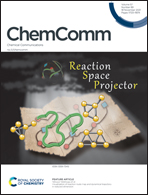Calix[4]pyrroles as ligands: recent progress with a focus on the emerging p-block element chemistry
Abstract
Calix[4]pyrroles are readily synthesized in one step from pyrroles and ketones. For several decades, these macrocycles have been exploited as powerful anion receptors or ligands for transition and rare-earth metals. In contrast, calix[4]pyrrolates as ligands for p-block elements were established only in 2018. The present feature article reviews these developments, together with the recent progress on s-, d-, and f-block element complexes of the calix[4]pyrroles. Particular focus is given on the calix[4]pyrrolato aluminate and the corresponding silane, both featuring square planar-coordinated p-block elements in their highest oxidation states. These unique “anti-van’t-Hoff–Le-Bel” structures introduce valuable characteristics into main-group element chemistry, such as agostic interactions or ligand-to-metal charge transfer absorptions. The most vital reactivities are highlighted, which rely on properties ranging from amphoterism, redox-activity, and a small HOMO–LUMO gap up to the ability to provide a platform for additional external stimuli. Overall, these developments underscore the beneficial impact of structural constraint of p-block elements and element–ligand cooperativity to enhance the functionality of the most abundant elements in their native oxidation states.
![Graphical abstract: Calix[4]pyrroles as ligands: recent progress with a focus on the emerging p-block element chemistry](/en/Image/Get?imageInfo.ImageType=GA&imageInfo.ImageIdentifier.ManuscriptID=D1CC05120B&imageInfo.ImageIdentifier.Year=2021)


 Please wait while we load your content...
Please wait while we load your content...